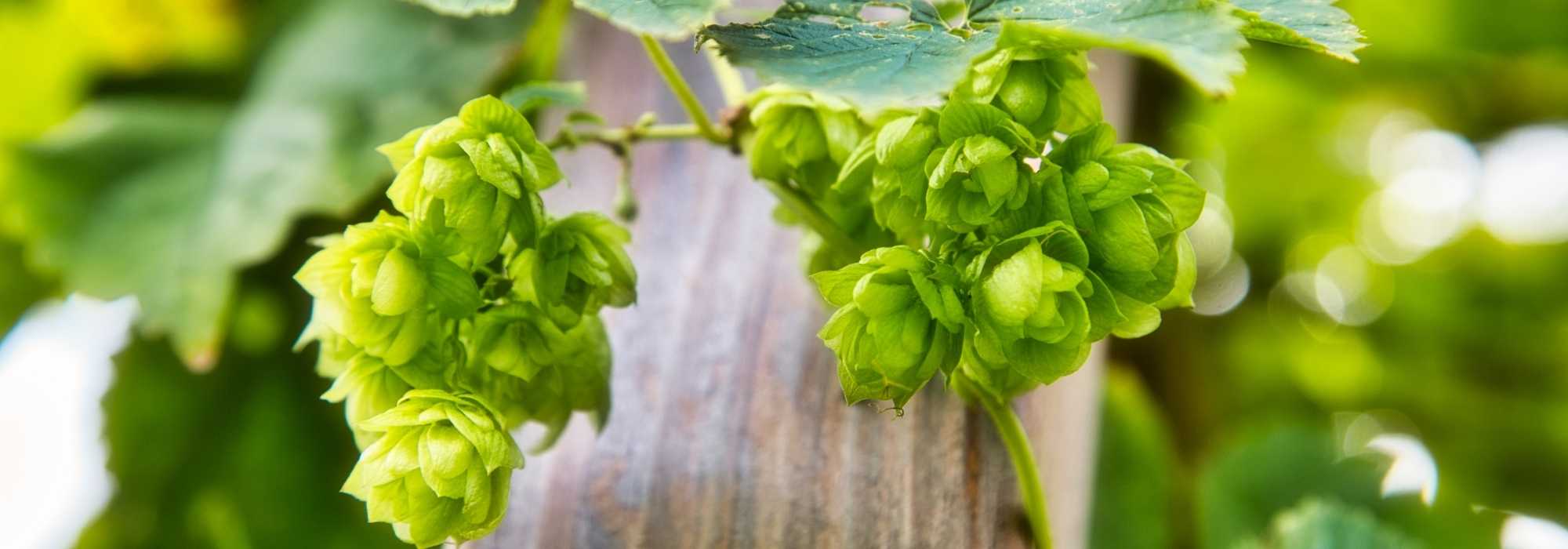
How to grow hops?
A climbing plant without worries
Contents
Hops, or Humulus lupulus in Latin, is a perennial climbing plant grown for its female cones, but also for ornamental purposes in our gardens. This liana is native to our flora and is very easy to grow. How and where should you plant hops? Does this climbing plant require maintenance? We’ll tell you everything in this advice sheet.

Hops cones
Planting hops
Where and when to plant?
Hops are best planted in spring: between April and May, or in autumn, in October.
All types of soil are suitable for hops, even clayey soils. However, hops require a rich and deep soil to develop fully.
The best exposure is partial shade, but they can be grown in full sun in colder regions.
 A sufficiently sunny exposure is ideal for hops
A sufficiently sunny exposure is ideal for hops
How to plant?
In the ground:
- Start by of hops in warm water for a few minutes to moisten the root ball;
- Dig a hole with a volume twice that of the root ball in width and depth;
- Loosen the soil at the bottom of the hole and add some decomposed manure or some well-matured compost;
- Place the root ball at the bottom of the hole and backfill with the excavated soil. Be careful not to bury the collar of the plant;
- Gently firm the soil with your hands and water thoroughly to eliminate air pockets between the roots and the soil.
In a pot:
- Hydrate your young plant of hops for a few minutes in a basin of water;
- Pour a layer of 5 to 10 cm of clay balls at the bottom of the pot for drainage (or alternatively, a good layer of gravel): a minimum 10 L pot, with drainage holes;
- Fill the pot three-quarters full with a mix of 50% garden soil and 50% potting soil, along with a handful of well-matured manure or compost;
- Place the root ball or rhizome in the centre of the pot, then fill the rest of the pot with substrate up to 2 cm below the rim;
- Firm the soil around the plant with your hands and water generously;
- Add mulch at the base of your hops to prevent the soil from drying out too quickly. Place the pot in partial shade. Avoid direct sunlight, as it would dry out the substrate too quickly.
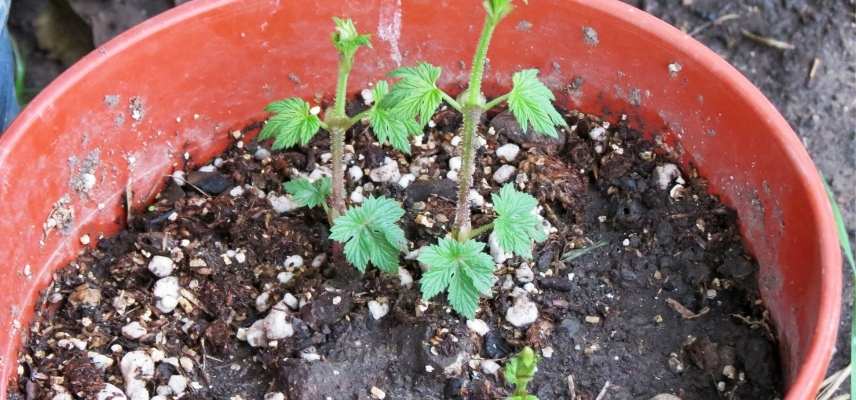 Young shoots of hops planted in a pot
Young shoots of hops planted in a pot
Did you know?
Monocultures of hops are grown for the production of female cones, an essential ingredient in beer making. Over a hundred varieties are cultivated in various countries such as the United States, New Zealand, Australia, Germany, Poland, the Czech Republic, China, and the United Kingdom. France and Belgium continue to produce hops, but on a more anecdotal scale globally. Hops grow vertically in fields on supporting wires.
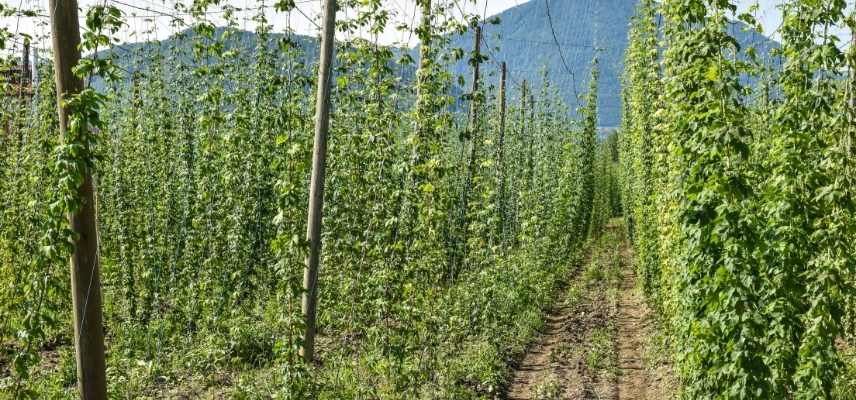 Hop cultivation field
Hop cultivation field
The care of hops
A minimal maintenance
You can pinch the young shoots of your hop plant to encourage it to ramify in early May.
Hop has deciduous foliage, meaning it falls in autumn. The plant will then enter dormancy and disappear underground during winter. You can remove the dry stems towards the end of winter, between February and March. Avoid doing this earlier, as the dry stems help protect the rhizomatous stump during winter.
The hop plant clings to its support on its own. However, you can assist it a bit by guiding it towards the support you want it to colonise: a string, a pergola, a bamboo support, or even horizontally on the railing of a balcony.
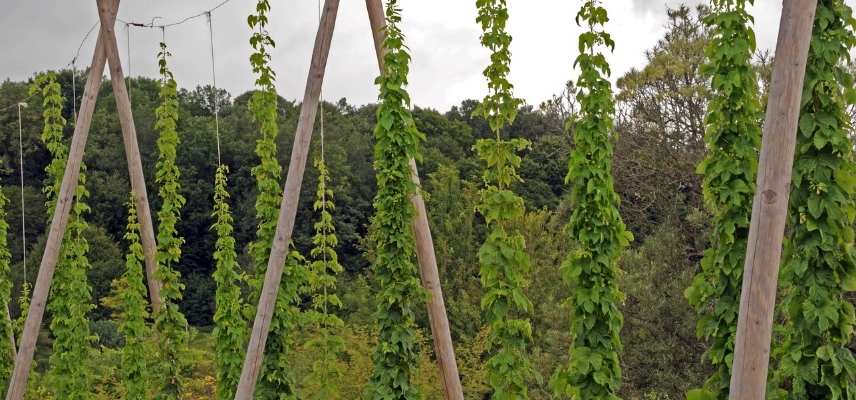
Growing hops requires suitable trellising
Managing watering
Don’t forget to water during the first year in relatively dry periods and mulch around the base to retain moisture throughout its life.
Be careful! Hops grown in pots will suffer more from a lack of water than those planted in the ground. Therefore, it will need watering twice a week during the growing season, without saturating the substrate. In case of high temperatures, consider watering your hops every 2 days. In winter, forget about watering during the vegetative rest.
Feeding your plant
Hops are greedy plants: a bit of compost at its base in spring or dried blood will be welcome. In pots, you can top-dress with a bit of compost once a year or provide a well-balanced liquid fertiliser for houseplants, rich in nitrogen, but not too much (N – maximum 6) once a month.
Discover other Humulus - Hop
View all →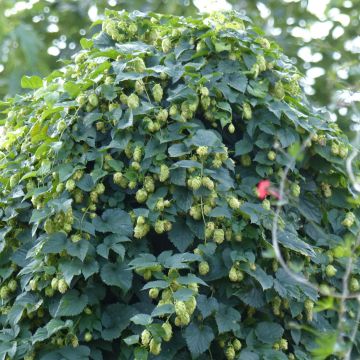
Available in 2 sizes
Available in 1 sizes
Available in 1 sizes
Available in 2 sizes
Available in 1 sizes
Available in 1 sizes
Available in 1 sizes
Available in 1 sizes
Available in 1 sizes
Available in 1 sizes
Pests and potential diseases
In the garden, hops do not suffer from any diseases if planted in the right location. Problems mainly arise in industrial monocultures of hops, where they are more susceptible to fungal diseases and pests.
However, the hop aphid can appear in overly rich soils. This mainly occurs with the use of chemical fertilisers, so always prefer organic inputs: manure, horn, compost, … or even nothing at all. The soil naturally enriches itself by leaving plant “waste” on the ground.
Hops are the host for some nocturnal moth caterpillars, with no real consequences for the plant: hop eupithécie, hop borer, tufted and snout moth.
Be cautious of slugs… especially in the days following planting and during the early days of spring when the shoots emerge from the soil. A protective cover made of transparent material (glass or recycled) will be perfect. Simply remove it when the stems emerge from the neck.
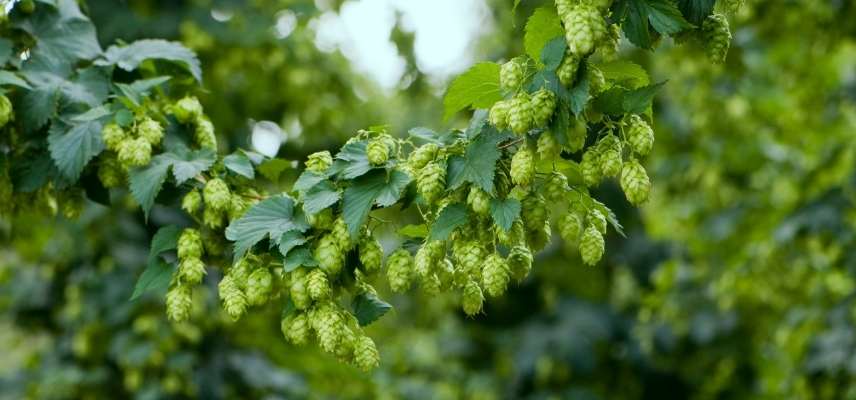
Humulus lupulus
- Subscribe!
- Contents

































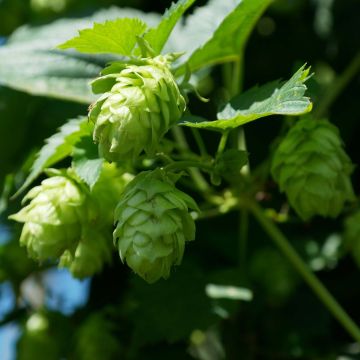
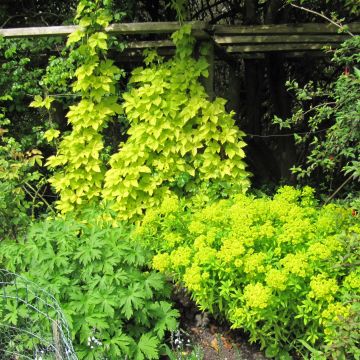

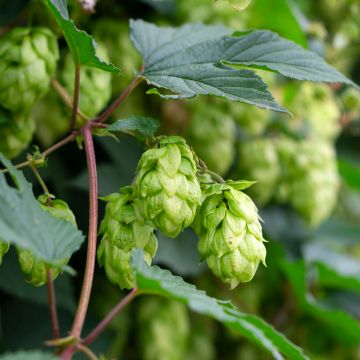
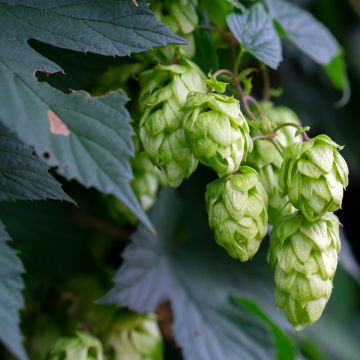
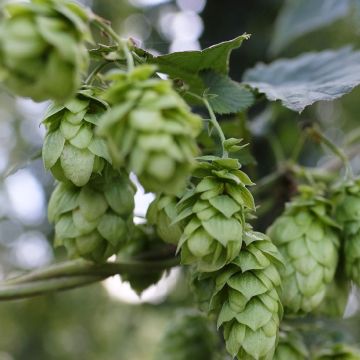
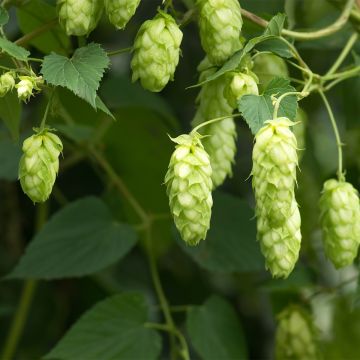

Comments